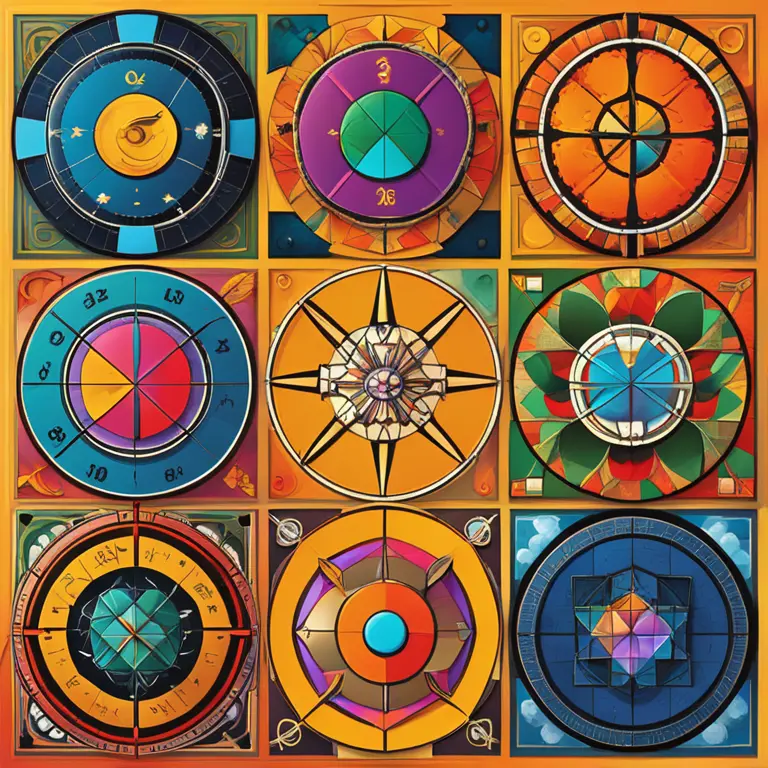
The Rhythms of Life: A Comprehensive Biorhythm Guide
Discover the fascinating world of biorhythms and how they can influence our daily lives and future decisions.
article by Adrian Wallace
Introduction to Biorhythms
Biorhythms are a complex concept hailing from the early 20th century, postulating that our lives are influenced by natural mathematical cycles. These rhythms are believed to affect our physical, emotional, and intellectual well-being. According to the theory, from the moment we are born, we are influenced by these cycles, which ebb and flow in predictable patterns throughout our lives. The profound impact of these patterns intrigues many, leading them to seek insights about their personal cycles and potential future outcomes.

The Three Primary Cycles
Central to biorhythm theory are three key cycles: Physical (23 days), Emotional (28 days), and Intellectual (33 days). Each cycle is thought to oscillate between positive and negative phases. The Physical cycle affects energy levels, stamina, and general health; the Emotional cycle governs mood, creativity, and perception; while the Intellectual cycle influences analytical thinking, reasoning, and memory. Core to understanding one’s biorhythms is the recording and observation of these cycles, which some believe can aid in predicting periods of strength or vulnerability.

Calculating Biorhythms
To calculate one's biorhythms, specific software or charts that factor in the date of birth and the current date are used. By plotting these cycles, individuals can purportedly predict days of high performance or caution. For instance, if one's emotional cycle is low while the intellectual cycle is high, it may suggest a good day for analytical work but a poor one for social engagements. Critics argue that biorhythms lack scientific backing and predictability, attributing positive outcomes to a placebo effect or coincidence rather than any physiological or psychological processes.
Biorhythms and Astrological Elements
In the realm of astrology, biorhythms are sometimes analyzed in conjunction with zodiac signs and planetary interactions for a multi-layered perspective of one's potential fortunes or challenges. As we move beyond 2024, astrologers continue to observe celestial movements and trends, offering a unique combination of biorhythmic calculations and traditional astrological forecasts. While both practices are distinct in nature, proponents suggest that they can complement one another, providing richer, more personalized insights.
Utilizing Biorhythms
Fans of biorhythms use their patterns to make informed decisions about health, relationships, and career planning. For example, knowing when one's physical rhythm is at a peak could be useful in planning athletic pursuits, whereas understanding one's intellectual cycle could be advantageous when making strategic decisions. By acknowledging the ebb and flow of these natural cycles, people believe they can live more harmoniously within their own rhythms.
Skeptics and the Scientific Stance
The concept of biorhythms has been met with skepticism, particularly from the scientific community, which often dismisses it as pseudoscience due to a lack of empirical evidence. Critics cite a lack of rigorous testing and the inability of biorhythm theory to consistently predict outcomes as grounds for dismissal. Nevertheless, the concept continues to capture the imagination of many who are searching for patterns and predictive tools in life's seemingly random course.
Published: 1/30/2024
Modified: 1/30/2024
More predictions
Come back here soon to learn more about yourself and your future


The Art of Biorhythm Reading: Embrace Your Cycles
Delve into the fascinating world of biorhythm reading to align with your natural life cycles for improved well-being and foresight.


The Essence of Biorhythms: Interpreting Life's Cycles
Delve into the concept of biorhythms to comprehend how they might influence your physical, emotional, and intellectual wellbeing throughout life's natural cycles.


The Rhythms of You: A Guide to Biorhythm Theory
Discover the foundations of biorhythm theory and how it purports to map the cycles of physical, emotional, and intellectual energy in our lives.